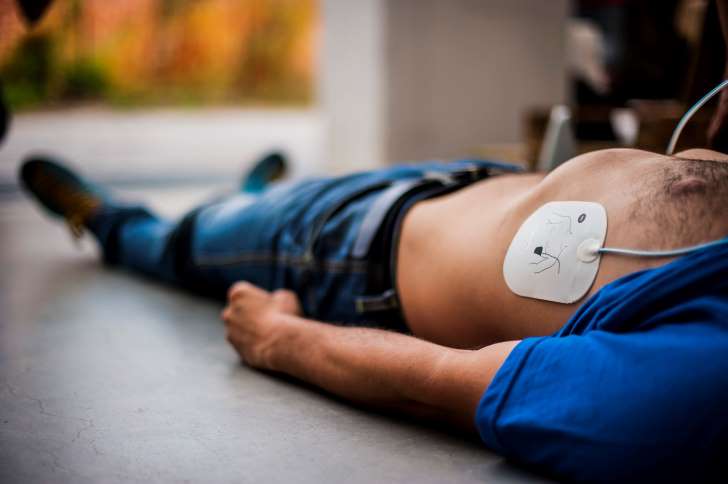
10 Mar How to Increase Your Odds Of Surviving a Heart Attack
Better yet, here’s how to prevent one from ever happening at all. Reason #37,421 to exercise: Fit people who suffer a heart attack are less likely to die from the ailment than those who are out of shape, finds new research from Johns Hopkins University.
In the study, scientists analyzed the MET scores of people who performed a 15-minute treadmill stress test. MET—or metabolic equivalent of a task—is a measure of activity that takes into account both the length and intensity of your workout.
Of the participants who went on to have a heart attack in the following six years, those who achieved a MET score of 10 for at least one minute during the initial test were 40 percent more likely to survive than those with lower MET scores.
For comparison, running at a 10-minute mile pace earns you an MET score of 9.8, according to the Physical Activity Compendium. Jogging at a slower pace—a 13-minute mile pace—clocks in at 6 METs. Lying down and watching TV equals 1 MET.
Why Fitter People Survive Heart Attacks
Not only does research show fitter people are less likely to have heart attacks, but when they do, they tend to be less severe, says study author Mike Blaha, M.D., M.P.H. That increases the likelihood of surviving one, he says.
And even when exercisers suffer serious heart attacks, they’re more likely to live, Dr. Blaha says.
Here’s why: Every time you work out, your body needs additional blood and oxygen. Consistent cardiovascular exercise builds extra new blood vessels to your heart to accommodate for this—a process called collateralization.
That means more blood supply to your heart. And if a blockage causes a heart attack in one vessel, blood can still continue to flow to your heart muscle via those additional vessels, says Dr. Blaha.
So the area of your heart that sustained the attack will be less likely to wither and incur long-term damage.
How to Increase Your Chances Of Surviving a Heart Attack
First, try a version of the study’s treadmill test to find out how you would cope during a heart attack.
If you can maintain a 10-minute per mile pace for a full minute or more, keep up your current workout routine.
However, if you struggle to maintain that pace for a minute, it’s an indicator that you need to improve your cardiovascular fitness. This will not only increase your heart attack survival rate, but will also decrease your risk of suffering from one in the first place.
Dr. Blaha recommends three weekly 20-minute aerobic workouts where you reach a MET score of 10 or higher for at least 1 minute. Many cardio machines—bikes, rowers, and treadmills—will measure METs for you.
If you don’t have access to a cardio machine, strap on a fitness tracker and run intervals. Alternate one minute of running at a 10-mile pace or quicker (the equivalent of almost 10 METs) with slower recovery periods between.
* MSN





